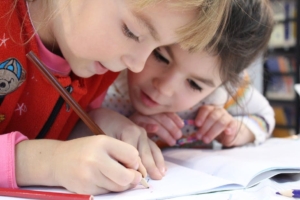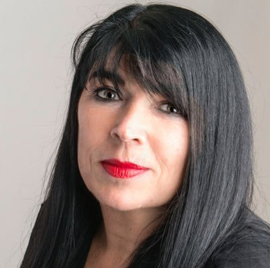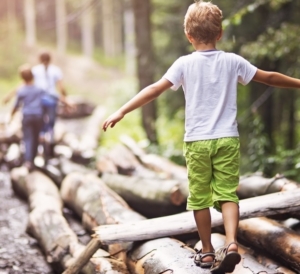The Relevance of Pedagogical Documentation In The Field of Childhood Education
By: Leila Alhabib
Following up on our webinar “Vivid Life and Learning: Rendering Through Lived Stories” led by Dr Lynn McNair, we wanted to take on a more general look on the topic of pedagogical documentation, and how heavily it’s impacted the field of childhood education.
What is Pedagogical Documentation?
Being a concept rather than a theory, pedagogical documentation has always been a subject matter in the childhood education field. It is often used to find answers to the many questions that exist about children and discovering what methods are best used for each child’s learning.
Pedagogical documentation is the act of transcribing and recording children’s learning. This is done to learn more about how children think and learn, which is useful in developing newer methods for education as well. This documentation needs to occur in everyday life and from observing children’s everyday experiences, and not just be seen as recording the results of an experiment.
Pedagogical documentation can be in the form of videos, audio recordings, written notes, sample works of children, pictures, or as taught by Lynn McNair, lived stories. These forms of documentation allow adults to study and understand the many languages of children, whether it be through their actions, words, voice or tone. 
It’s consistency is why the concept of pedagogical documentation is rather difficult. Teachers who want to be able to improve must make a habit of always documenting the learning of the children around them, in order to be able to tailor their teaching methods to best fit them.
There have been many researchers that have attempted to further the discoverings made in this area. This includes looking at different ways to document this learning.
Reggio Emilia Documentation
The Reggio Emilia Approach is an educational philosophy built upon the work of many researchers and workers in this field. The Approach was founded in the mid- nineteenth century, and was built upon the belief that children have strong potential as individuals. This approach is what leads to educators having the role of observers, rather than setting limits with input in how children should play. This approach introduces the different languages in which children communicate with, and how by being aware of such communication happening, understanding and documenting it will also be easier.
Children’s potential, creativity, and curiosity is the main focus of this approach. Adults provide a nurturing environment for children so that they can learn based on their own interests. Through documenting, teachers can create new chances for children to investigate and learn. This can involve creating openings for asking good questions, giving the chance for children to become researchers by learning more about their curiosities. Holding experiments and allowing creativity and mistakes to happen can teach communication, respecting new ideas, teamwork, and many other skills that cannot be taught through classroom education. The observation of children learning in this environment is part of documentation.
Froebelian Perspective
One person who made a large impact on the field in particular was Friedrich Fröbel, a German Pedagogue. His works generally revolved around child play, and is best known for being the person who created “kindergartens”. His main argument was that play is what allows children to learn, and that in childhood, educators should not try to enforce the teaching of any information. Froebel believed that childhood is critical to development, and educators should not just see it as a preparation for the future. Children should be allowed to play, use their creativity, discover and learn on their own in this time of their lives.
 “Islands of Expertise: topics of which ‘children become interested in and which they develop relatively deep and rich knowledge’” -Dr Lynn McMair O.B.E
“Islands of Expertise: topics of which ‘children become interested in and which they develop relatively deep and rich knowledge’” -Dr Lynn McMair O.B.E
We’ve held a webinar with Dr Lynn McNair, a Lecturer and fellow researcher at the university of Edinburgh, on the topic of pedagogical documentation through lived stories. She combines the teachings of many theorists in this area, particularly Friedrich Froebel. The recording of this past webinar is available on our website with English, French, Chinese, Turkish, and Farsi subtitles. In this lesson, Lynn looks at the many different means of documenting children’s learning without limiting their creativity.
Implementing Pedagogical Documentation in the Classroom
Documentation can be done through many ways, and much of it is already being done just through the work that children do in the classroom or at home. A child’s homework, drawing, or assessments are all forms of documentation that can show the process of learning that took place.
Although, there are more ways of documenting that can give one more of a chance to reflect on what and how they taught through the results and feedback children give. Although, it must be acknowledged that not everything can be documented, therefore the select data that you collect must be the most helpful to you. During this time you must also acknowledge the reason behind documentation, which is for one’s own growth as an educator.

Little hikers walking on a tree trunks in a forest.
Nonetheless, here are a few methods of documentation that have proved to be effective and efficient in the field:
- Asking children for a reflection on what they’ve learned at the end of a lesson or activity.
- Keeping files for each child and their collected work to notice patterns of growth.
- Photographs and short videos of children doing a given activity.
- Jotting down observations and notes about patterns in children’s learning
- Taking note on when children participate and engage in a lesson
- Diagrams that show the curriculum, that can later be used to document when the children learned best based on their reflections and assessments
- Collecting homework assignments at random times to document growth. Assessments are also a part of this, but a homework assignment represents the natural thoughts and effort a child puts in their work.
There are many other forms of documentation, and it is best for an educator to find the forms of documentation that work best for them.
References:
What on earth is pedagogical documentation? Kindiedays. (n.d.). https://www.kindiedays.com/Pedagogicaldocumentationwhy.
Early education. Friedrich Froebel | Early Education. (n.d.). https://www.early-education.org.uk/about-froebel.
Reggio Emilia approach. Reggio Children. (n.d.). https://www.reggiochildren.it/en/reggio-emilia-approach/.
Guidelines for documenting children’s learning. Australian Children’s Education and Care Quality Authority. (2018, January).

Comments